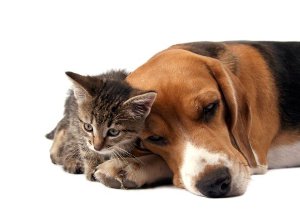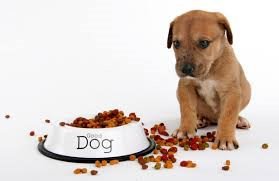|
Many people believe their vets. Veterinarians on the other hand believe what pet food manufacturers are saying. So when pet food are advertised as healthy, vets catch the news and pass this information down to the pet owners visiting their clinics. The problem is that many people do not do their own research. Dry pet foods are not always the healthy treat everybody thinks. These could be even worse than the french fries that people buy from fast-food restaurants. Why? Food manufacturers are not disclosing the dangerous ingredients found in pet food.
This is a test
Hidden Carcinogens in Pet Food
Cancer is one of the illnesses that tops the list of most feared diseases in humans and thus, they try to cut down on processed foods in order to avoid this. Little do they know that the same type of disease could also affect their pets, compromising their longevity, due to poor pet food choices. Here are some of the carcinogens that manufacturers fail to include in pet food products.
1. Acrylamide
 The International Agency for Research labelled it as a “probable human carcinogen”.1 This was classified as “a reasonably anticipated to be a human carcinogen” by the National Toxicology Program while the US Protection Environmental Protection Agency says this is “likely to be a carcinogen to humans”. Based on lab results, acrylamide was tested positive in increasing the risks associated with several types of cancers. The International Agency for Research labelled it as a “probable human carcinogen”.1 This was classified as “a reasonably anticipated to be a human carcinogen” by the National Toxicology Program while the US Protection Environmental Protection Agency says this is “likely to be a carcinogen to humans”. Based on lab results, acrylamide was tested positive in increasing the risks associated with several types of cancers.
Acrylamide is commonly used in industrial processes such as paper and plastic production. This can also be formed when starchy food is cooked in very high temperatures. Pet foods contain starchy ingredients and are cooked in high temperatures hence, it is unavoidable that these contain the carcinogenic compound acrylamide.
2. Aflatoxin
 Aflatoxins are produced as a result of the presence of fungi on food2. This was named as such after it was discovered that that Aspergillus Flavus toxins caused that controversial turkey X disease around 1960. Certain environmental factors such as geographical location, processing practices and food storage contributes to the possible formation of aflatoxins on food. Aflatoxins are produced as a result of the presence of fungi on food2. This was named as such after it was discovered that that Aspergillus Flavus toxins caused that controversial turkey X disease around 1960. Certain environmental factors such as geographical location, processing practices and food storage contributes to the possible formation of aflatoxins on food.
Animals and humans alike are not immune to the effects of this compound. In dogs, this could lead to liver disease depending upon the extent of exposure. Aflatoxins are considered one of the most carcinogenic substances ever known and these may be found in pet food.
3. Butylated Hydroxysanisole (BHA)
 How do processed foods remain crisp and fresh for several months? Manufacturers make use of preservatives. Pet food remain fresh due to its BHA content. According to previous research, BHA is hailed for its antioxidant benefits. Since it’s considered generally safe to use, this has found its way in human food such as lard, cereal and potato chips. How do processed foods remain crisp and fresh for several months? Manufacturers make use of preservatives. Pet food remain fresh due to its BHA content. According to previous research, BHA is hailed for its antioxidant benefits. Since it’s considered generally safe to use, this has found its way in human food such as lard, cereal and potato chips.
One might think that people are eating it so it’s supposed to be considered safe for pets too. But wait! BHA in high doses has been proven to cause cancer in rats3. This has been listed by the National Toxicology Program as “a reasonably anticipated to be a human carcinogen”4. As for pets that feed daily on pet food, this means greater exposure to BHA.
4. Cyanuric Acid and Melamine
 Cyanuric acid is a compound commonly found in herbicides, bleaches and disinfectants. The FDA permits the use of this compound in some types of animal feed that includes cat and dog food. In 2007, a massive pet food recall was implemented in North America, Europe and South Africa, following incidences of renal failure in cats and dogs. Cyanuric acid is a compound commonly found in herbicides, bleaches and disinfectants. The FDA permits the use of this compound in some types of animal feed that includes cat and dog food. In 2007, a massive pet food recall was implemented in North America, Europe and South Africa, following incidences of renal failure in cats and dogs.
The culprit? The combination of cyanuric acid and melamine in pet foods facilitated the formation of hard-to-dissolve crystals in the renal system of pets. Furthermore, melamine by itself is considered by the WHO International Agency for Research on Cancer as carcinogenic for animals based on experimental results.5
5. Ethoxyquin
Monsanto, a multinational agrochemical and agricultural biotechnology corporation, originally developed Ethoxyquin as a rubber stabilizer. This was later used as a pesticide and as a preservative for spices and animal feed. Although this is considered as an antioxidant just like BHA, this too has been linked to debilitating pet illnesses such as kidney problems and cancer.
To clear the safety issues surrounding these claims, Monsanto conducted its own research but their findings were dubbed as unreliable due to unprofessional conductby the FDA. Since there is still no conclusive research regarding the safety of Ethoxyquin, pet food manufacturers still continue to use this additive in their products.
  
Others in Peril
Dogs and cats are not the only ones that are in the danger of eating dangerous chemicals as a result of poor manufacturing practices. In 2011, it was announced in the US market that the chickens they might be eating for dinner may contain arsenic. How did the dangerous poisonous compound only commonly featured in crime television series get into the world’s favorite dinner staple?
Chicken feeds have them. This is a clear indication that chicken breeders and owners should not only be mindful of putting up durable chicken coops for their pets but also take a closer look at the content of their food. While FDA finally banned most arsenic substances found in bird feed, this is still under the process of evaluating the use of nitarsone, an arsenic-based compound.6
Aside from the use of low quality pet foods, people may be surprised that animal feeds aren’t the only things that may be found in their dinner plate. Remembers the chickens? Their manure are not just recycled as plant fertilizers. Some of these are fed to farm cattle. Burgers still looking as delectable as ever?
Conclusion
Ready-made pet foods may be a great option for people on the go. But considering the health risks associated with these, these may not be the best choice for pets. Aside from carcinogenic substances, commercial pet foods have also been linked to obesity, allergy and poor skin and hair conditions.
Yes, preparing one’s own pet food concoction will take longer time to prepare. However, considering the longer lifespan and better health disposition of pets, then the extra time spent in preparing these means better quality of life for pets. Just like people are only supposed to limit their intake of low quality foods such as potato chips and fast-food chicken, they should also control their pet’s consumption of unhealthy processed foods.
Source:
1. http://www.cancer.org/cancer/cancercauses/othercarcinogens/athome/acrylamide
2. http://en.wikipedia.org/wiki/Aflatoxin
3. http://ntp.niehs.nih.gov/ntp/roc/twelfth/profiles/butylatedhydroxyanisole.pdf
4. http://kannis.co.uk/ingredients_to_avoid.php
5. http://www.kcet.org/living/food/the-nosh/commentary-1/fda-finally-bans-most-arsenic-in-chicken-feed-oh-and-by-the-way-theres-arsenic-in-your-chicken.html
6. http://www.globalresearch.ca/fda-finally-admits-chicken-meat-contains-cancer-causing-arsenic/5353189
|